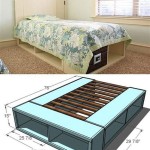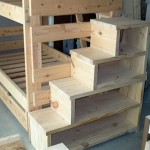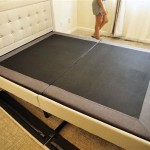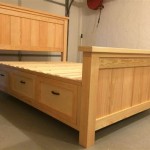Are RV Beds Smaller?
When planning an RV trip, the size and comfort of the sleeping arrangements are important considerations. Compared to standard home beds, RV beds tend to be smaller, primarily due to space constraints within the compact RV living quarters. However, there are variations in RV bed sizes depending on the type of RV and the specific models.
Variations in RV Bed Sizes
The dimensions of RV beds vary based on the class and size of the RV. Here's an overview of common RV bed sizes:
- Class A RVs: Typically have the largest beds, usually queen- or king-size, ranging from 60" x 80" to 76" x 80".
- Class B RVs: Have smaller beds, often in the range of 48" x 75" to 54" x 75", suitable for one or two people.
- Class C RVs: Bed sizes vary, but typically range from 48" x 75" to 60" x 80", providing more sleeping space than Class B RVs.
It's important to note that these are approximate measurements, and actual bed sizes may vary slightly depending on the manufacturer and model.
Factors to Consider When Choosing RV Bed Size
When choosing an RV bed size, several factors should be considered:
- Occupancy: Determine how many people will be sleeping in the RV and choose a bed size accordingly.
- Space constraints: Consider the available space in the RV and select a bed size that fits comfortably without overcrowding the area.
- Height: Take into account the height of the occupants and ensure that the bed provides sufficient headroom and legroom.
- Storage space: Smaller RV beds may offer more storage space under or around the bed, which can be valuable for storing bedding and other items.
- Personal preferences: Ultimately, the best bed size is one that meets the comfort and space requirements of the individuals using it.
Alternatives to Traditional RV Beds
While traditional RV beds are typically smaller than home beds, there are alternatives for those who prefer more space or want to customize their sleeping arrangements:
- Murphy beds: These beds fold up into a cabinet when not in use, freeing up floor space during the day.
- Bunk beds: Ideal for families or groups, bunk beds provide multiple sleeping spaces in a compact area.
- Pop-top roofs: Some RVs have expandable roofs that create additional headroom, allowing for larger beds and more comfortable sleeping conditions.
Conclusion
RV beds are generally smaller than standard home beds to optimize space within the compact RV living quarters. However, there is a range of sizes available, and choosing the right bed size depends on the type of RV, occupancy, space constraints, height of occupants, and personal preferences. By carefully considering these factors and exploring alternative bed options, RV owners can create comfortable and restful sleeping arrangements for their RV adventures.

Rv Mattress Sizes Guide Dreamcloud

Rv Mattress Sizes And Dimensions With Cutout Guide
5 Must See Rv Bunkhouse Floorplans Winnebago

Art Of Making An Rv Bed Girl Camper

Best Organic Rv Mattress Non Toxic Natural Latex Get Green Be Well

Best Organic Rv Mattress Non Toxic Natural Latex Get Green Be Well

6 Winnebago Floorplans With Enough Beds For Bigger Families

Stumptown Juniper Mattress Made In Sumner Certipurus Certified

What You Need To Know About Rv Mattress Sizes

Rv Mattresses Sizes And Dimensions U S News
Related Posts







